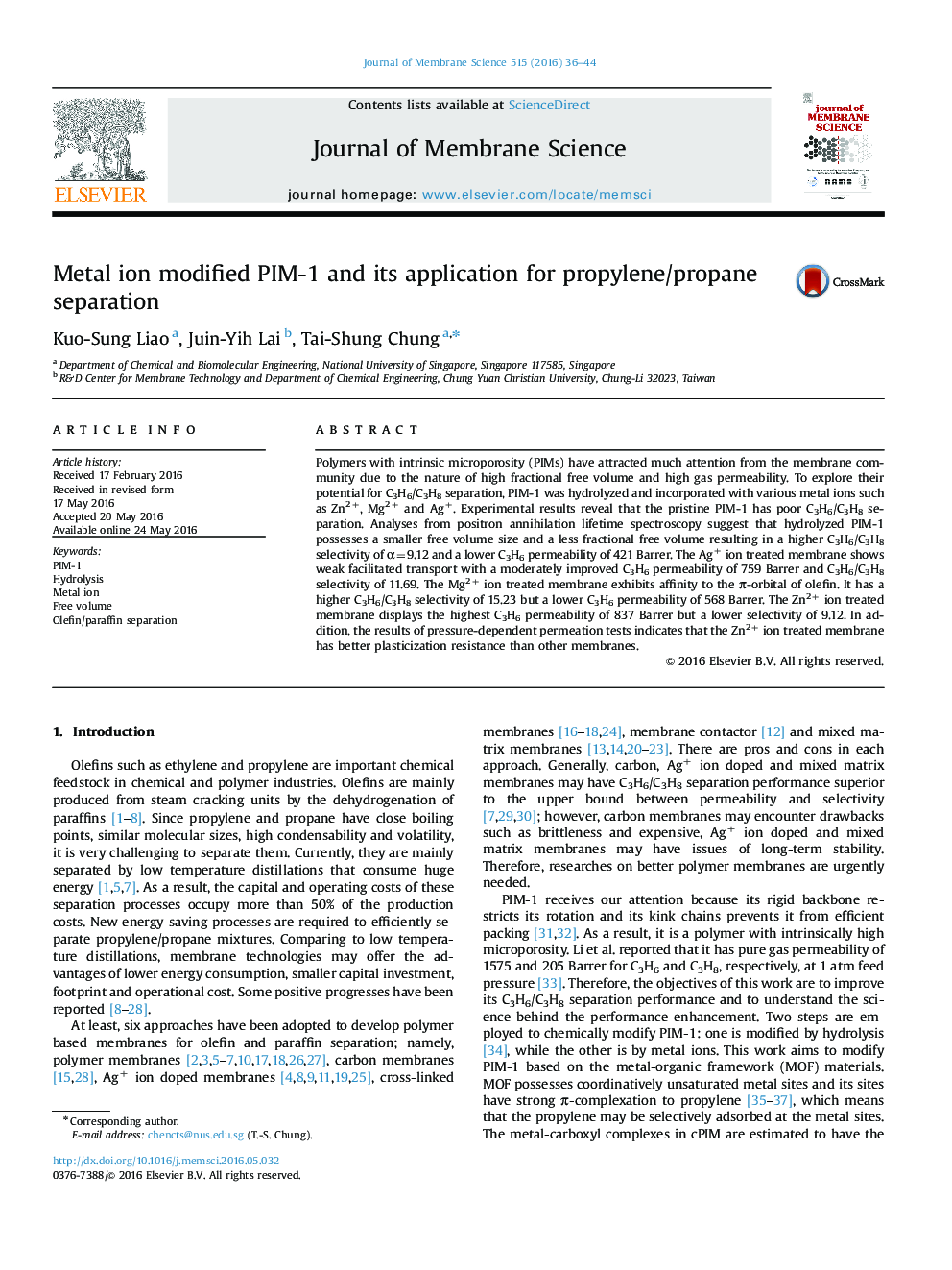| Article ID | Journal | Published Year | Pages | File Type |
|---|---|---|---|---|
| 632373 | Journal of Membrane Science | 2016 | 9 Pages |
•PIM-1 membranes were modified by hydrolysis and three metal ions: Zn2+, Mg2+ and Ag+.•Free volume related to gas permeation was tuned by metal ions.•All metal ion modified membranes surpassed the C3H6/C3H8 upper bound line.•The Zn2+ ion modified membrane shows better plasticization resistance.
Polymers with intrinsic microporosity (PIMs) have attracted much attention from the membrane community due to the nature of high fractional free volume and high gas permeability. To explore their potential for C3H6/C3H8 separation, PIM-1 was hydrolyzed and incorporated with various metal ions such as Zn2+, Mg2+ and Ag+. Experimental results reveal that the pristine PIM-1 has poor C3H6/C3H8 separation. Analyses from positron annihilation lifetime spectroscopy suggest that hydrolyzed PIM-1 possesses a smaller free volume size and a less fractional free volume resulting in a higher C3H6/C3H8 selectivity of α=9.12 and a lower C3H6 permeability of 421 Barrer. The Ag+ ion treated membrane shows weak facilitated transport with a moderately improved C3H6 permeability of 759 Barrer and C3H6/C3H8 selectivity of 11.69. The Mg2+ ion treated membrane exhibits affinity to the π-orbital of olefin. It has a higher C3H6/C3H8 selectivity of 15.23 but a lower C3H6 permeability of 568 Barrer. The Zn2+ ion treated membrane displays the highest C3H6 permeability of 837 Barrer but a lower selectivity of 9.12. In addition, the results of pressure-dependent permeation tests indicates that the Zn2+ ion treated membrane has better plasticization resistance than other membranes.
